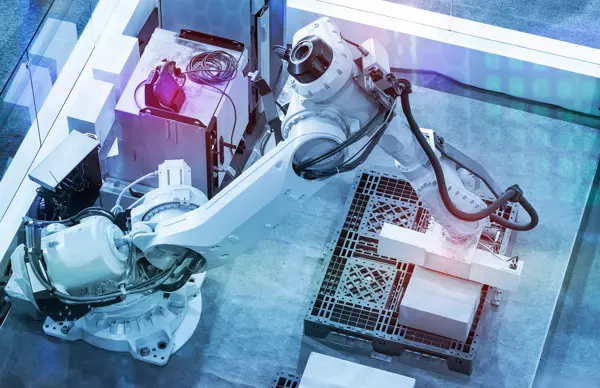

Consultancy offering
Envision what your future in manufacturing looks like
Start with the HSO Catalyst Envisioning Workshop
Meet our architectsDefinitions of Enterprise Automation
Definitions: What are we talking about when we discuss Enterprise Automation (EA)?
Here is how some top analyst firms explain their definition of EA.
Gartner has introduced the term Hyperautomation, which describes a disciplined, business-driven approach to rapidly identify, vet and automate as many business and IT processes as possible.
Hyperautomation enables scalability, remote operations and business model disruption. It involves the orchestrated use of multiple technologies, tools or platforms. Examples include for example AI, machine learning, event-driven software-architecture, RPA, BPM, integration platforms (PaaS), low-code and no-code tools.
IDC uses the term Intelligent Process Automation (IPA): a strategic imperative for enterprises to accelerate their digital transformation by digitizing business operations and delivering radical improvements in process efficiency, productivity, employee performance, and operational intelligence.
IPA leverages a toolkit of automation technologies including RPA, Artificial Intelligence, Workflow and Integration Platforms to drive successful business outcomes that bring human experts and intelligent systems together seamlessly, and scales with the additional use of Process Mining, Task Mining, and Operational Intelligence technologies.
The term Digital Process Automation (DPA) was first used by Forrester in 2017 to describe the shift from Business Process Management to a growing need for businesses to automate processes as part of wider digital transformation initiatives.
Forrester Research states: “As organizations undertake digital transformation efforts, an important realization emerges: process matters. Investments in beautifully designed web and mobile experiences won’t move the needle unless application development and delivery (AD&D) professionals ensure that the processes on the back-end align to support a true end-to-end customer experience.”
This means that Digital Process Automation can be applied to manual, repeatable tasks throughout an organization to improve efficiency, while at the same time connecting applications and streamlining processes throughout departments, from employee onboarding in Human Resources to procurement in Finance.
Our definition is:
Enterprise Automation enables organizations to scale up and create agility in constantly dynamic and unpredictable market circumstances. It is therefore an integral part of digital transformation, accelerating change, delivering actionable insights and improving business performance.
